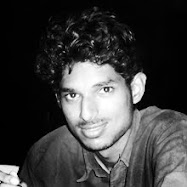Coldwar-Risks and responsibilities
Coldwar:-
The Cold War (1947–1991), was the continuing state of political conflict, military tension, proxy wars, and economic competition existing after World War II (1939–1945) between the Communist World and the powers of the Western world. Although the primary participants' military force never officially clashed directly, they expressed the conflict through military coalitions, proxy wars, espionage, propaganda, conventional and nuclear arms races, appeals to neutral nations, rivalry at sports events, and technological competitions such as the Space Race. After worldwar2 the world was literally split into two(USSR and USA),they started increasing their powers by developing their technologies in military forces etc. The arms race and the technological competition between the US and the Soviet Union in the Cold War period resulted in extensive scientific research, which gave birth to computers. But there is a certain risk involved in this justification. Computers are used to speed up some applications in military ,we can directly do some applications through computers. Thus every country tried to increase their technology in military after world war2.
By taking nuclear weapons as example I will explain this context. A nuclear weapon is an explosive device which derives its destructive force from nuclear reactions, either fission or combination of fission and fusion. These weapons are advanced techniques in military .These are originated for national security and to show the strength to the world. A modern thermonuclear weapon weighing little more than 2,400 pounds (1,100 kg) can produce an explosive force comparable to the detonation of more than 1.2 million tons (1.1 million metric tons) of TNT.Thus, even a small nuclear device no larger than traditional bombs can devastate an entire city by blast, fire and radiation. Nuclear weapons are considered weapons of mass destruction, and their use and control has been a major focus of international relations policy since their debut. Defense is the main responsibility of these weapons but if they went to terrorists it will cause so much damage. We have to Protect these nuclear weapons from terrorist forces
Correct usage of this weaponry People should be informed about the needs and consequences of these nuclear attacks.
After the Bombing on Hiroshima and Nagasaki there is no specific need to really highlight the risks. Everyone knows the risks of nuclear attack from other county and also the radiation caused due to the testing of nuclear weaponry. We knew how much damage can these nuclear causes to the people and it will continues to the next generations also.
In recentyears UNO is taking the responsibility of checking the least usage of the nuclear weaponry . But these nuclear weaponry testing is still going on. There are many risks if these nuclear weapons fall into wrong hands like terrorists whocan create dangerous situation in country for their purposes. So there are many risks for having and testing these nuclear weaponry.
By
J.santosh kumar
EE09b085







